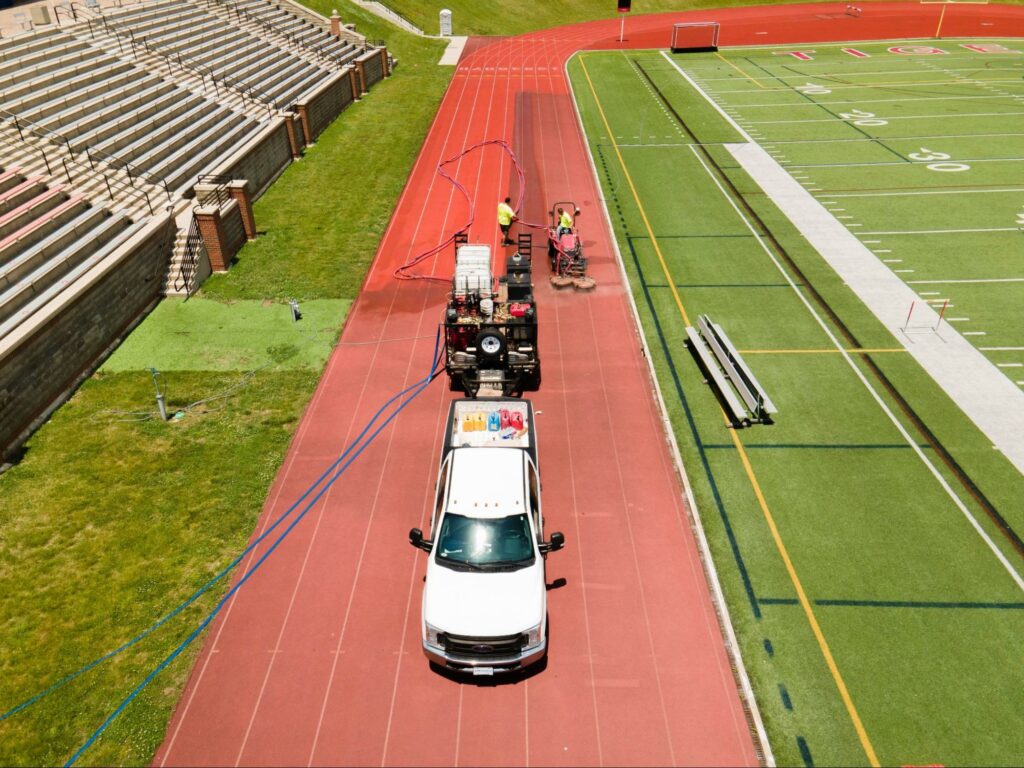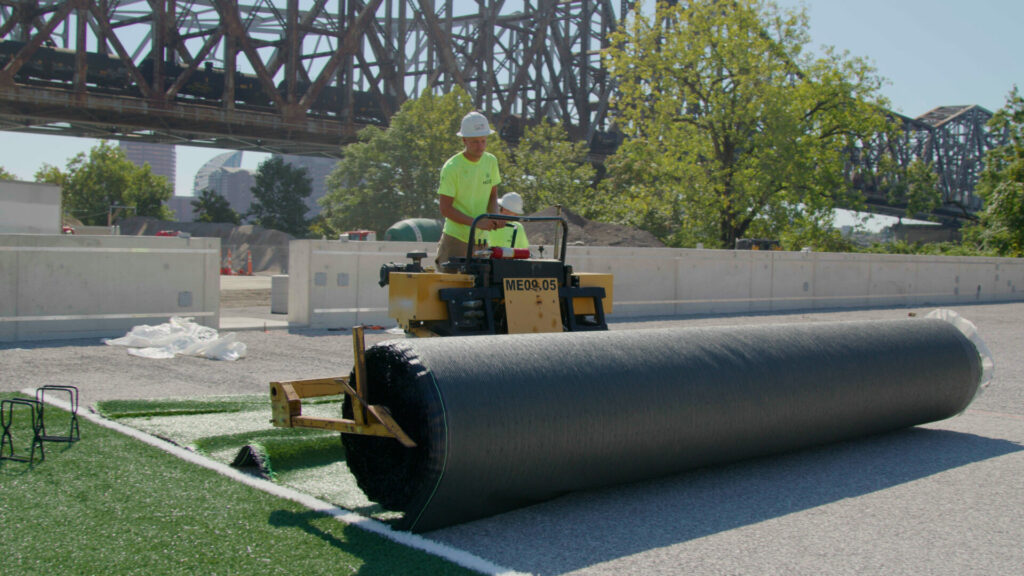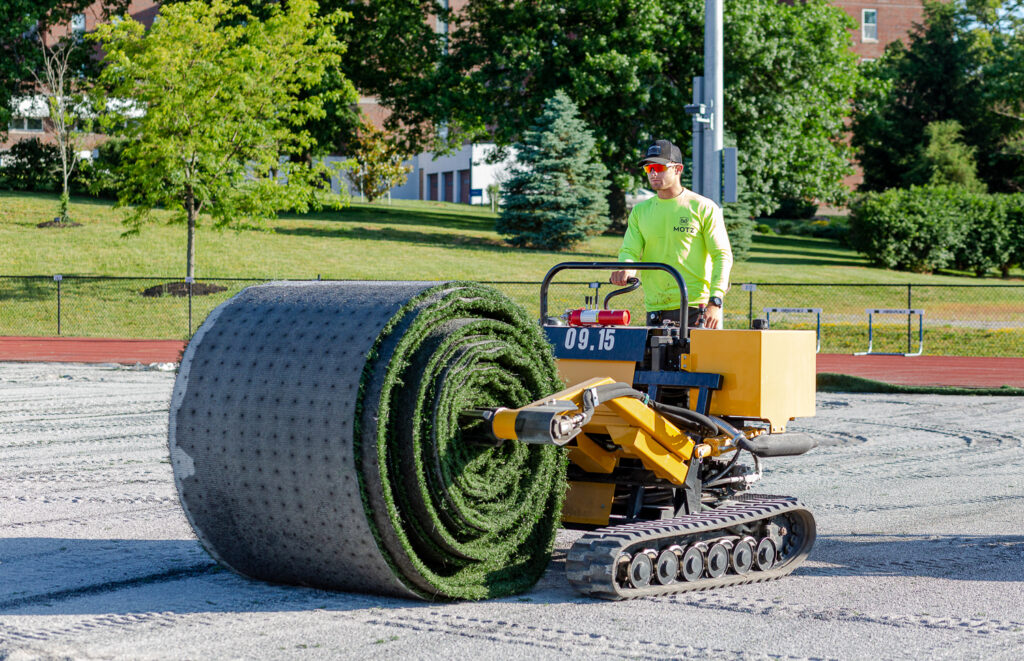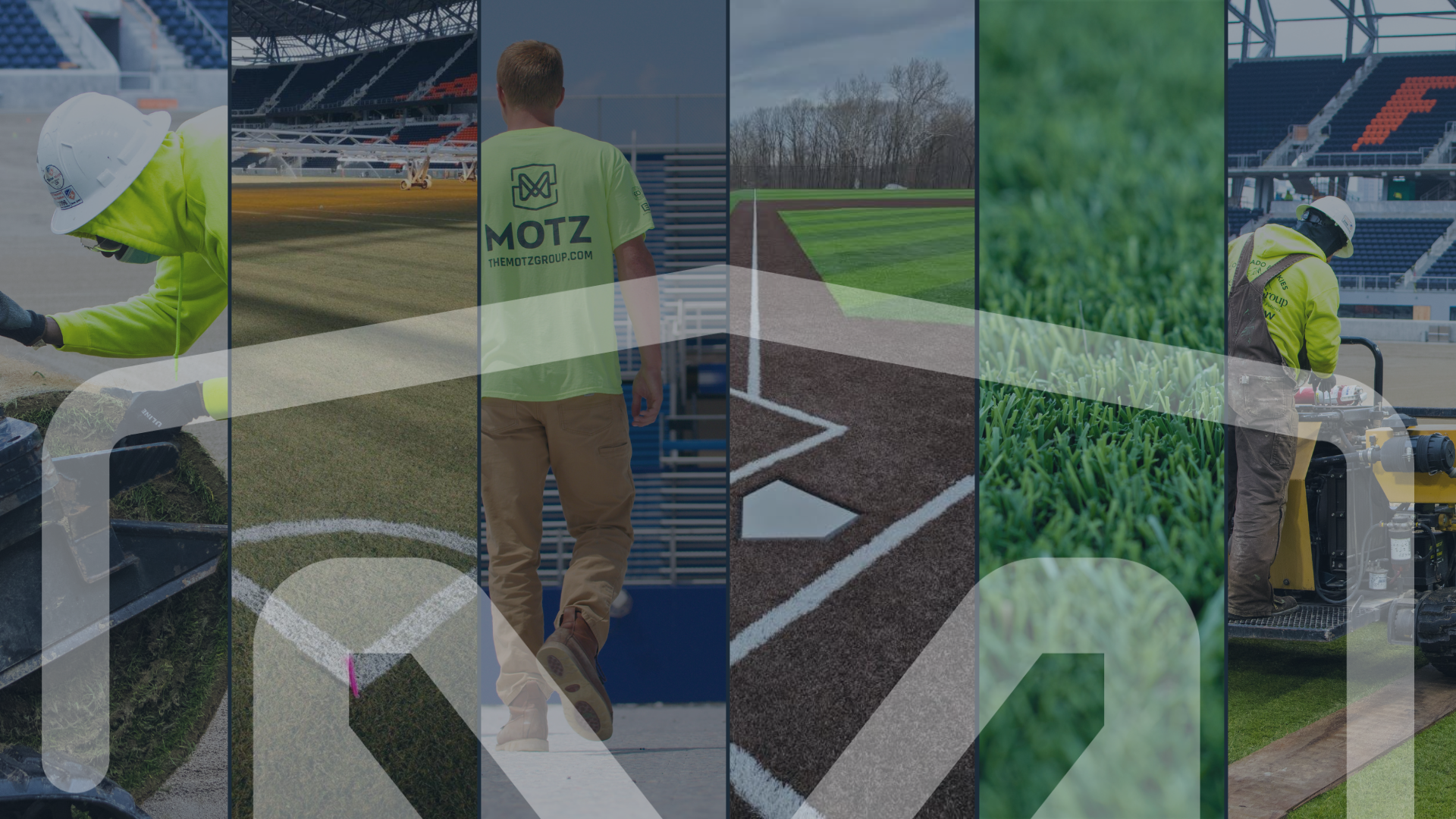
Sports Field Blog
Subscribe To Email Updates
Subscribe to our weekly newsletter and we’ll send updates straight to your inbox
Is Artificial Turf a Good Option for High Schools?
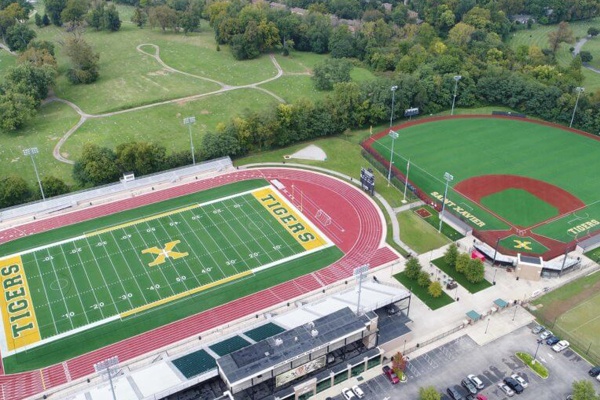
The pros are outweighing the cons for high schools nationwide
As recently as 15 years ago, the term “artificial turf” would make some sports coaches, players, fans, parents and athletic directors cringe. That’s because the artificial turf of the past was quite rough, to say the least.
Artificial turf first hit the market in the 1960s. In 1966, the Houston Astros new baseball stadium, the Astrodome, could not accommodate a natural grass field, so an artificial turf was installed instead. This became known as “Astroturf,” and the name became trademarked. Indiana State University became the first outdoor stadium to install artificial turf a year later. Soon, many other stadiums began installing turf – Three Rivers Stadium in Pittsburgh and Veterans Stadium in Philadelphia being the two most well-known stadiums.
The boom in turf in stadiums across the country was soon met with disdain, though. The playing surface was hard, as it felt like a piece of hard carpet laid over concrete. Players didn’t like playing on it, both because of the way it caused some games to change – because of how a baseball would bounce off it, for example – and because it started resulting in many more player injuries because of the rough surface.
In response to all the negativity surrounding artificial turf, more and more stadiums began reverting to the “good old days” of playing fields – installing natural grass fields that were more pleasing to the eye and also to the players’ bodies.
But in the mid-1990s, a major revolution in artificial turf happened. That’s when companies began developing a new form of artificial turf that was partly made from polyethylene yarn fibers and included other significant changes to the composition and make-up of the material to make it safer to play on.
With the new inventions in artificial turf fields, this type of artificial grass became more and more popular in both professional and collegiate stadiums around the country. Today, the popularity, flexibility and even health benefits of the latest artificial turf fields has even made its way down to the high school level.
The growth in popularity of artificial turf fields has four main components; it’s pesticide free, saves on water and maintenance costs, increases the amount of play that can be done on one field and actually results in fewer injuries because of the improved playing surface. It’s quite amazing to think about. What once was considered an injury liability has now become a savior for the health of sports players everywhere.
Let’s take a look at each component of why artificial turf fields are becoming an increasingly popular option at high schools.
Allows for more playability
Land is often at a premium for high schools. Unlike college campuses, which have vast amounts of land on which to build, high school campuses are usually limited to a much smaller land footprint. That means a particular high school may only have one football field, a few soccer fields, a baseball and softball field or two and a field or two for field hockey and lacrosse.
Oftentimes, different sports have to share the same field with a sport of another high school season. The lacrosse team that plays in the spring may use the field the football team uses in the fall. The field hockey team that plays in the fall may use the same field the softball team uses in the spring. And the list goes on.
Any field surface that is used that much is bound to take quite the beating. Natural grass just can’t handle that type of volume for very long without the need for significant repairs, days off and eventual total replacement. An artificial turf field, in contrast, is much more durable and can withstand the beating that multiple sports put on it throughout four full seasons.
Helps prevent injuries
High school sports departments don’t have the annual maintenance budget that collegiate sports departments do. That means it’s often difficult for high school athletic departments to have the resources to properly maintain a field to the utmost degree after usage, or even after adverse weather hits.
This can result in the fields having uneven playing surfaces with divots throughout and excessive mud that gets turned up when the grass is ripped out. These are all significant injury hazards for players. Artificial turf fields don’t have those same concerns. They can withstand the heavy usage in good and bad weather, and don’t result in the same sloppy conditions after it rains, for example.
Saves water and is free of pesticides
In a time when conservation is a key word around the globe, artificial turf fields do just that – they conserve water. That’s because natural turf fields obviously require watering to keep them growing and healthy. Artificial turf fields require no water as part of ongoing maintenance. Similarly, natural grass surfaces often need pesticide and fertilizer treatments to keep them healthy, while artificial turf does not.
Reduced maintenance
All the maintenance of a natural grass field can add up very quickly. From watering to seeding to treating to drainage and repairing, a natural grass field can cost about $35,000 per year to maintain. On the flip side, maintenance on an artificial turf field can cost as little as $5,000 per year, one-seventh of that of a natural grass field.
With all these pros of an artificial turf field, the natural question to ask would be: Why doesn’t every high school in America install them? The most important reason, of course, is money.
Depending on the specific type of artificial turf, the size of the field and other factors such as drainage needs, an artificial turf field could cost anywhere from $400,000 to $1 million to install. That’s an awful lot of money for any level sports program, but especially for a high school. In fact, that amount of money could be a deal breaker before an argument can even be made that the pros outweigh the cons.
While the up-front costs are often prohibitive, more and more high schools are getting creative with how they help raise funds. Instead of just relying on school funds or taxpayer money, high school athletic departments are doing everything from conducting normal fundraising campaigns to finding corporate donors to pay for and sponsor the new artificial turf field.
The push is happening across the country because the benefits of potentially fewer injuries, lower maintenance costs, and a safer, more versatile and more durable playing surface are outweighing the potentially exorbitant up-front cost of installation. In fact, a lot of high schools are seeing the potential $30,000 annual cost savings in maintenance as a good eventual return on investment for the up-front cost of installation.
Similar Blogs
